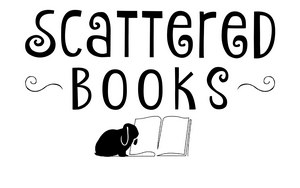
27 Feb Classic Summer Reading – The Great Gatsby, Synopsis and Review

Author Background
F. Scott Fitzgerald, born in 1896, is widely regarded as one of the greatest American writers of the 20th century. His works are synonymous with the Jazz Age, a term he coined. Fitzgerald’s writing is known for its evocative portrayal of the era’s flamboyance and moral vacuity, and “The Great Gatsby” is often considered his magnum opus.
“The Great Gatsby” is an exemplary novel that illustrates the pursuit of happiness and wealth in America, and how these ambitions often lead to disillusionment and tragedy, reflecting the hollowness at the heart of the American Dream.
Suggested Reading Age
This novel is best suited for readers aged 16 and above, given its complex themes and historical context.
 Plot Summary
Plot Summary
“The Great Gatsby” is set in the roaring 1920s, an era of unprecedented prosperity and cultural upheaval in the United States. The story unfolds in the fictional locales of West Egg and East Egg on prosperous Long Island.
The narrator, Nick Carraway, hails from the Midwest and comes to New York to learn the bond business. He rents a small house in West Egg, next to the grandiose mansion of the mysterious Jay Gatsby, a wealthy party-thrower whose origins and sources of wealth are a subject of widespread speculation.
Nick reconnects with his cousin, Daisy Buchanan, who lives in the more fashionable East Egg with her wealthy, but arrogant and unfaithful, husband Tom Buchanan. Daisy is a beautiful and enchanting woman, yet she exhibits a sense of sadness beneath her charming surface. The Buchanans introduce Nick to Jordan Baker, a cynical young golfer and socialite, with whom Nick becomes romantically involved.
As the summer progresses, Nick eventually receives an invitation to one of Gatsby’s legendary parties, which are known for their extravagance and the eclectic mix of guests, ranging from the famous and socially elite to the shady underworld figures. It is here that Nick first meets Gatsby, a surprisingly young and charming man who speaks nostalgically about the green light at the end of Daisy’s dock, visible from his mansion.
Gatsby confides in Nick that he is in love with Daisy, having known her in Louisville before the war, and is deeply obsessed with winning her back. Gatsby’s lifestyle and parties are revealed to be all for the purpose of attracting Daisy. He asks Nick to arrange a reunion between him and Daisy, which Nick agrees to do.
The reunion reignites Daisy and Gatsby’s love, leading to an affair. However, their happiness is short-lived as tensions escalate between Gatsby and Tom, culminating in a confrontation at the Plaza Hotel in New York City. Daisy’s loyalty wavers and she ultimately chooses to remain with Tom.
Tragically, the novel reaches its climax with the accidental death of Myrtle Wilson, Tom’s mistress, who is struck and killed by a car driven by Daisy, though Gatsby takes the blame. The novel concludes with Gatsby’s murder by Myrtle’s husband, George Wilson, who mistakenly believes Gatsby to be responsible for Myrtle’s death before killing himself. The tragedy is followed by Gatsby’s sparsely attended funeral, after which Nick, disillusioned with the East and its moral decay, returns to the Midwest.
 Main Characters
Main Characters
- Jay Gatsby: A wealthy, enigmatic figure, Jay Gatsby is known for his lavish parties. His life is driven by his love for Daisy Buchanan, and his character embodies the complexity, illusions, and disillusionment of the American Dream.
- Nick Carraway: The narrator, Nick Carraway, hails from the Midwest and represents the grounded, moral compass of the story. His perspective offers an insightful, often cynical view of the opulence and decadence of the era.
- Daisy Buchanan: Daisy is an alluring, yet ultimately shallow and fickle character, embodying the era’s materialism. Her complex relationship with Gatsby and her husband Tom reflects the moral ambiguity and the pursuit of wealth and status.
In-Depth Analysis
Strengths: Fitzgerald’s narrative is a brilliant blend of romantic and tragic elements, woven into a critique of the American Dream. His use of symbolism, particularly the green light at the end of Daisy’s dock, the eyes of Dr. T.J. Eckleburg, and the Valley of Ashes, is masterful, adding layers of meaning to the narrative.
Weaknesses: The novel’s concise nature may leave some readers wanting more depth in character development, particularly with secondary characters.
Uniqueness: Fitzgerald’s poetic and vivid prose, combined with his acute social commentary and deep exploration of themes like identity, longing, and the corrupting influence of wealth, set this work apart.
Literary Devices: Fitzgerald’s use of symbolism, foreshadowing, and metaphor are particularly notable. His depiction of the 1920s America is both a microcosm of the American dream and a symbolic landscape reflecting the moral decay hidden beneath the era’s glittering surface.
Relation to Broader Issues: “The Great Gatsby” offers a critical view of the American Dream and its implications, serving as a relevant reflection on societal issues like wealth inequality, the pursuit of happiness, and the illusion of social mobility.
Evaluation
Potential Audiences: Ideal for fans of classic American literature, readers interested in the Jazz Age, and those who enjoy novels that combine romance with social commentary.
Comparisons with Similar Works: “The Great Gatsby” can be compared with other American classics like “Death of a Salesman” by Arthur Miller, which also explores the flawed pursuit of the American Dream.
Final Recommendations: This novel is a must-read, not only as a historical reflection of the 1920s America but also for its enduring themes and exquisite narrative style.
Thematic Analysis and Stylistic Elements
The themes of illusion versus reality, the decay of the American dream, love and obsession, and the disparity between different social classes are deftly explored through Fitzgerald’s elegant and symbolic prose. His portrayal of the Jazz Age is both glamorous and critical, revealing the era’s moral vacuity beneath its opulent surface.
Comparison to Other Works
Fitzgerald’s novel can also be juxtaposed with his other works, like “Tender Is the Night” and “This Side of Paradise,” which similarly explore themes of wealth, love, and the disillusionment of the American dream.
Awards and Bibliographic Information
- Title: The Great Gatsby
- Author: F. Scott Fitzgerald
- Publication Date: 1925
- Publisher: Charles Scribner’s Sons
- 9780743273565
- 180 Pages
- Awards: While the novel did not receive contemporary awards, its posthumous recognition and critical acclaim have made it one of the greatest novels in American literature.
Potential Test Questions with Answers
- What does the green light symbolize in the novel?
- Answer: The green light symbolizes Gatsby’s hopes and dreams, particularly his desire for Daisy and what she represents in his quest for happiness and fulfillment.
- How does Fitzgerald critique the American Dream in “The Great Gatsby”?
- Answer: Fitzgerald critiques the American Dream by portraying its pursuit as inherently flawed, leading to moral decay, disillusionment, and tragedy, exemplified by Gatsby’s life and demise.
- Describe the symbolic significance of the Valley of Ashes.
- Answer: The Valley of Ashes symbolizes the moral and social decay resulting from the uninhibited pursuit of wealth, contrasting the glittering surface of the upper-class society.
Other Reviews, Ratings, and Links
For other perspectives on “The Great Gatsby,” readers can explore reviews on Goodreads and Amazon. The novel generally holds high ratings, reflecting its status as a classic.
Details about the Book Series, Other Media Formats, and Information about the Author
While “The Great Gatsby” is a standalone novel, its themes and style are echoed in Fitzgerald’s other works. The novel has been adapted into several films, including the notable 2013 version directed by Baz Luhrmann, and a 1974 version starring Robert Redford.








 Plot Summary
Plot Summary  Main Characters
Main Characters